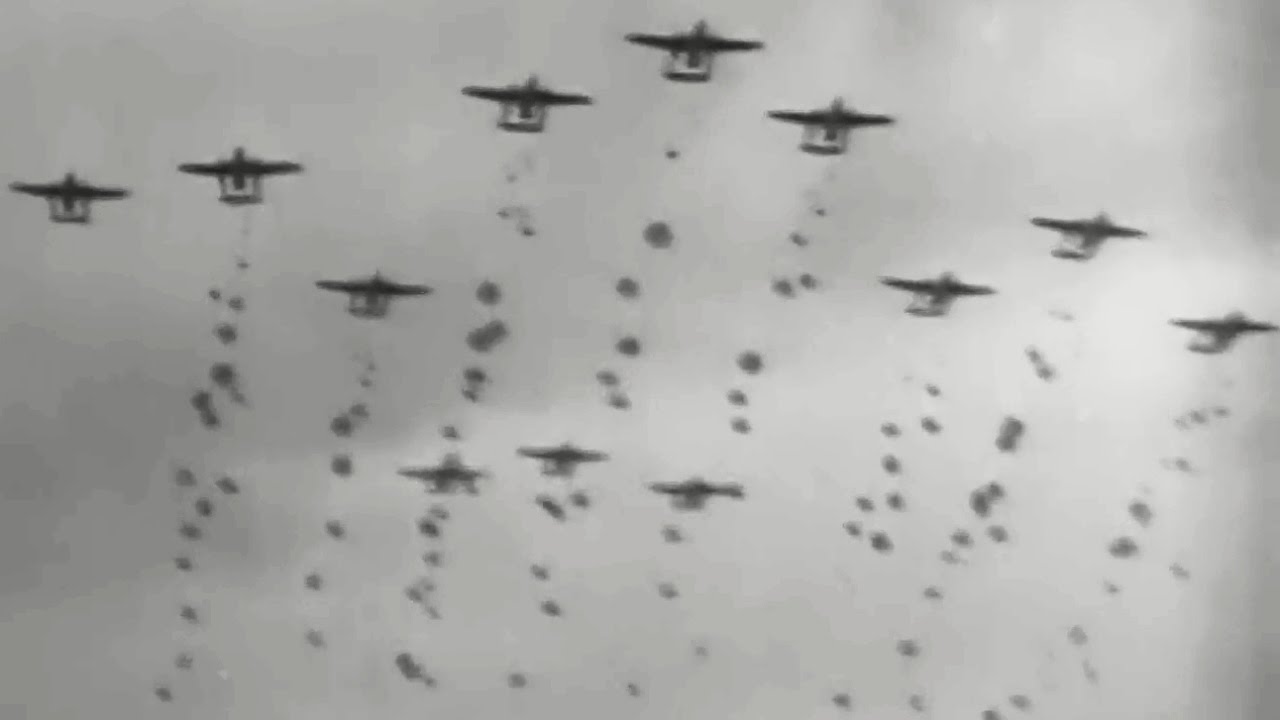The Big Picture TV Series playlist:
Korea Playlist:
more at
“From September 20 to October 20, 1950 United Nations forces struck hard against the Communist army in Korea. Footage shows the recapture of Seoul, the fall of the North Korean capital city, Pyongyang, an airdrop by the 187th Regimental Airdrop team, and the U.S. Navy battleship Missouri in action.” There is a loss of audio sync from 16:26 to 19:53 in this episode.
“The Big Picture” TV series, Season 1, Episode 3, TV-171
Public domain film from the US National Archives, slightly cropped to remove uneven edges, with the aspect ratio corrected, and one-pass brightness-contrast-color correction & mild video noise reduction applied.
The soundtrack was also processed with volume normalization, noise reduction, clipping reduction, and/or equalization (the resulting sound, though not perfect, is far less noisy than the original).
Wikipedia license:
The first United Nations (UN) offensive during the Korean War began on September 15, 1950, with the U.S. X Corps, under Army Maj. Gen. Edward M. Almond, making an amphibious assault at Inchon, 150 miles north from the frontlines. In the south, the Eighth U.S. Army, made up of U.S., ROK, and British forces, counterattacked the next day. The 1st Marine Air Wing provided air support for the landing at Inchon while the Fifth Air Force likewise supported the Eighth Army. On September 16, as part of a strategic bombing campaign, the FEAF bombed Pyongyang, the capital of North Korea, and Wonsan, an east coast port 80 miles north of the 38th parallel.
U.S. Marines attached to X Corps captured Kimpo Air Base near Seoul on September 17. Two days later the first FEAF cargo carrier landed there, inaugurating an around-the-clock airlift of supplies, fuel, and troops. C-54s returned wounded personnel to hospitals in Japan, and C-119s airdropped supplies to front-line forces. Bad weather hindered close air support of the Eighth Army, but on the 26th the U.S. 1st Cavalry Division forged out of the Pusan Perimeter north of Taegu and within a day thrust northward to link up with 7th Infantry Division forces near Osan, 25 miles south of Seoul. Air controllers, using tactics similar to those developed in France during World War II, accompanied the advancing tank columns, supported tank commanders with aerial reconnaissance, and called in close air support missions as needed. On September 26, General Douglas MacArthur announced the recapture of Seoul, but street fighting continued for several more days.
For a time in August and September 1950, before the recapture of Kimpo, all FEAF flying units had to fly from bases in Japan. The only continuously usable tactical base in Korea was Taegu (K-2), which the FEAF used as a staging field to refuel and arm tactical aircraft. On September 28 fighter-bombers returned permanently to Taegu. As US forces swept North Korean troops from South Korea, aviation engineers rebuilt the airfields, beginning with Pohang, on the east coast 50 miles northeast of Taegu. USAF flying units returned on October 7 to Pohang and to other rebuilt airfields at Kimpo, near Seoul, and at Suwon, 20 miles south of Seoul…
Supported by a UN resolution, President Harry S. Truman directed the U.S. Joint Chiefs of Staff to authorize pursuit of the retreating North Korean forces, and on October 9 the Eighth Army crossed the 38th parallel near Kaesong. American and South Korean forces entered the North Korean capital of Pyongyang on October 19. FEAF B-29s and B-26s continued to bomb surface transport lines and military targets in North Korea, while B-26s, F-51s, and F-80s provided close air support to ground troops. FEAF also furnished photographic reconnaissance, airlift, and air medical evacuation…
Meantime, on the east coast of Korea, the ROK forces crossed the 38th parallel on October 1, and ten days later captured Wonsan. On October 26 South Korean forces reached the Yalu River at Chosan, 120 miles north of Pyongyang. Communist forces counterattacked within two days along the ROK lines near Chosan, forcing the South Koreans to retreat. The People’s Republic of China had entered the conflict against the Eighth U.S. Army in Korea in the west, and the U.S. X Corps in the east. At this point, the war in Korea took on an entirely different character as the tide turned against the UN forces.

